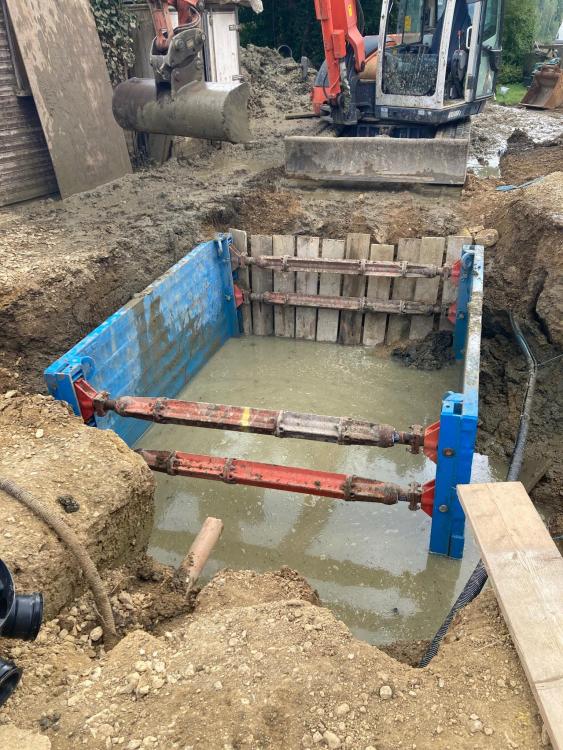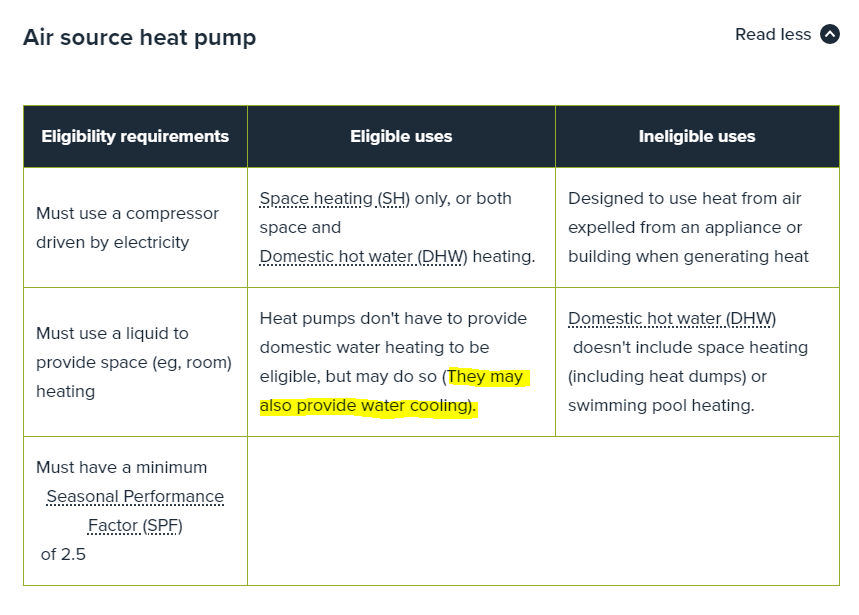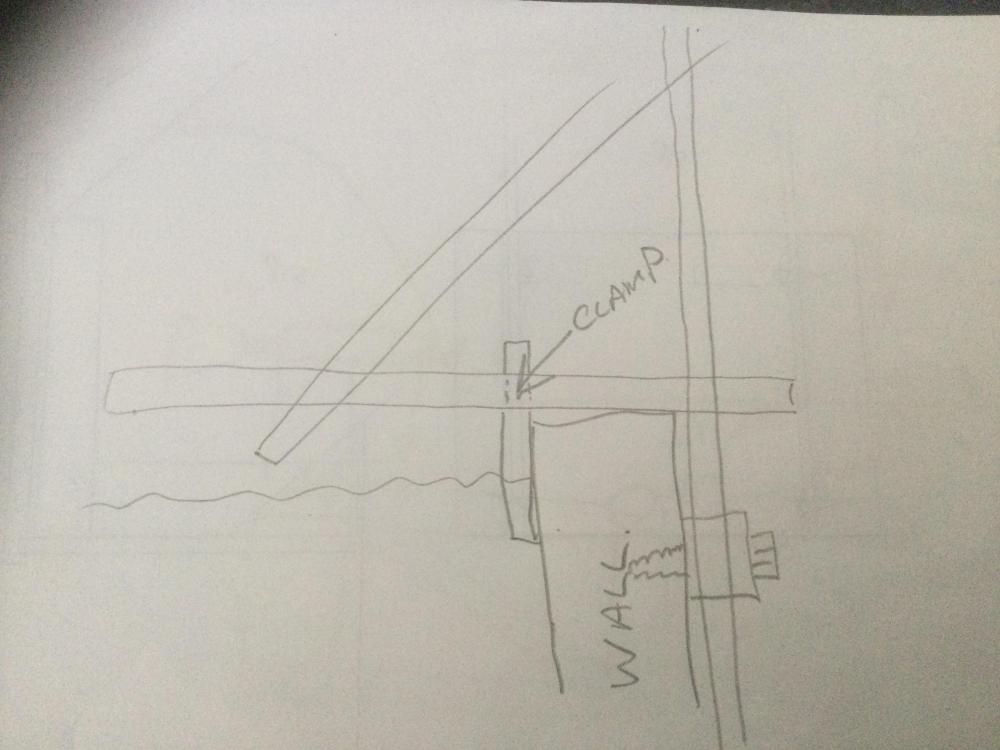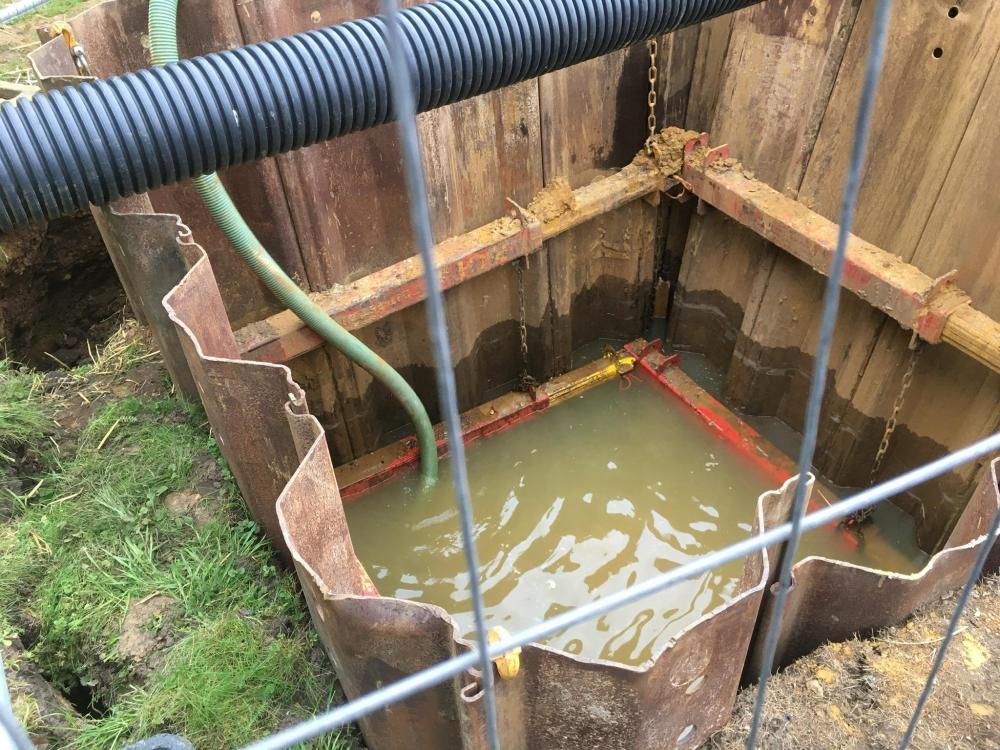Leaderboard
Popular Content
Showing content with the highest reputation on 09/29/21 in all areas
-
Morning I’ve just finished fitting my treatment plant, which turned out to be a major engineering project, the first attempt was abandoned due to high water table and we had to look for some advice and hire in some more kit, it all went according to plan the second time although it was a fight every second of the job, if anybody is dealing with bad ground or high water then shout out I think I’m probably fairly clued up now on a good process.3 points
-
No matter the scenario, planning drawings, building regs drawings etc are not construction drawings - there may be enough information on them for a builder to take on to construction but that's not the purpose of those drawings. With any set of drawings they should however be as accurate as possible, but with existing buildings it's absolutely critical for a contractor to do a dimension check as they start to open things up. There should be notes on any drawings stating the purpose of the drawing and advising that all dimensions are site checked - no one would ever pay us to go and re-survey a property once it's been opened up and redo all the drawings, it has to be a coordinated effort to report any differences between the assumptions made at the initial survey and the reality on site (although 200mm is quite some way out!!)3 points
-
Our building regulation drawings will state the relevant regulations in the spec whereas the construction drawings will have specific products specified, building reg dims are generally internal room dims, construction are to structure, loads more details added for construction stage Sections for building regs will show a typical wall, we'd add more specific section details for construction Window/door details for construction would be updated for specific manufacturers once they've been selected detailed finish layouts, setting out etc internal elevations we have a lot of energy calcs to go with building regs drawings usually due to people wanting loads of glass, so that needs to go with the regs but there's zero point in showing that to a contractor. you could add all that to a building regs pack (sometimes when we're working with a self builder we'll do a building regs + set which gives a lot of that detail) but in our experience a building control officer only wants to see compliance, if you swamp them with information you make their job harder - clearly everything needs to comply with the regs but there's a point of "reasonable enquiry" to illustrate compliance. Different drawings for different purposes - when a planning drawing shows a timber clad wall, you wouldn't expect it to tell you the fixing details for it - it's an iterative process where you add more and more detail as you go - we recently did an application over in Ireland where the building regs set was 6 sheets and the tender set which then went on to construction was 38!2 points
-
It is a commercial detail, especially in clear span portal framed buildings where the deflection can be a lot. WWilts, allow for 1/180 of the span. eg for 3.6m joist above, allow 20mm gap. Sounds clever, but I will have to think about it. You try it first.2 points
-
2 points
-
You need to put things in context, you are thinking that cabinets on the walls will increase the load, yes it will , but to what level. If you invited 4-5 friends over and you all stood shoulder to shoulder, let’s assume you all weigh 70kg, you wouldn’t panic that you where going to fall through the floor. So put it in context, a spine wall carrying a roof load then that’s fairly serious, a stud wall to an kitchen, no matter how many cabinets you put on it is not going to impose that much.2 points
-
I spoke to Enhabit about our cooling requirements and we are having the cooling modelling done (awaiting the results). we can use fan coils and it's something they would design but they say it complicates things and they've recommended keeping it simple and having the cooling as a separate system. plus the fan coils they've suggested aren't amazingly cheap and it's something that I just don't have time to play with as there's too much else to do. We are indeed having external blinds on the FF (and many GF) windows and we think our cooling requirements will be very low but we both can't sleep if it's too hot and if we can have an 'invisible' ducted AC system in the bedrooms for the occasional use we both think that it's a price worth paying. The AC company we've spoken to are happy to simply first fix for AC now and then we can just live in the house and see if we even need it and then if we do second fix the AC units with minimal disruption if we can't find the funds in the budget to fit it now. There are many options I'm finding with self-building and you have to, at some point, just make a decision and stick with it otherwise you could end up going around in circles. There's no reason why an AC cooling system can't be controlled from Loxone and so we can have a centrally managed temperature controlling system that can deal with hot and cold weather and whatever climate change throws at us, albeit for a price. I'm having to choose my battles with the build and decide which to attack myself and which to delegate out, and cooling is one of those I'm delegating.2 points
-
I don't really understand the question. Do you mean removing the brick corner and replacing with a steel column? Underpinning is horrible and expensive. Much easier to dig a hole from above.1 point
-
Nobody is saying how thick the screeds are! ?1 point
-
We do, on a daily basis! If we can't add any value and our skills aren't needed or suitable we pass work on to others who might be a better fit1 point
-
'Ow do. Before I launch into a thousand questions, I suppose I'd better introduce myself. I'm about to be retired (hopefully not in a Bladerunner way!), and I'm in the fortunate position of having a big project to get my teeth into. Basically, we've inherited a Riverside property that we want move into. To all intents and purposes it's a double static caravan that has been made in to a log cabin, with a tiled roof, but it feels like a bungalow, and has full sized rooms and large bathroom and kitchen.It's been lived in for the past 30 years, is structurally sound (we had it surveyed by a static van surveyor) but very dated and tired. The plan is to sell our current home and move by the river mortgage free. We're at the very first step, deciding whether to totally refurb the old place ( gutting the interior and new modern cladding and windows and doors) or removing it entirely and replacing it with a new "temporary" structure or going the whole hog and apply to planning for a new build. No option is off the table, but at the end of it, we don't want a mortgage. Budget would be a max 150 grand, but much less if possible! I'm a competent diyer and will do the grunt work, but the serious stuff will be done by pros. There is only electricity to the site so gas central heating is off the menu so air pump or solar will definitely be considered. I'll post photos soon. Decisions, decisions. TFS1 point
-
So you have 3 phase to the pole, but that is only a single phase transformer. You could probably get 3 phase to the house, but it would mean upgrading that transformer, it would be interesting to see how much they wanted for that.1 point
-
Read this site for a few weeks, and search back for any key words that seem relevant, and you will learn an awful lot. Someone put up a first principles checklist a few weeks ago. We all welcome photos of the site, for context, but it is best not to publish personal or location details, for many reasons and as all this is findable in online search.1 point
-
Hi and Welcome. Does the property currently have planning permission? Sounds like when it first appeared on the landscape it may not have had residential planning permission, if so has that ever been normalised?1 point
-
I think there is a big difference between small domestic and anything else. The former is to the regulations document, quite detailed for England, and to generally accepted practices. Anything bigger needs special details. My career has been heavy civils and commercial building construction, and the full drawings went to the inspector, with the absence only of setting out (ie where on the site) and externals. With a growing relationship with the same independent inspector, we came to know what he didn't need or want to see. On this hub we are mostly doing small domestic of course. Any answers to 'do any Architects ever turn down a commission?'1 point
-
Doesn't it just? Now it makes sense... Gabions would work but I would not underestimate how hard it will be to move 50 tonnes by hand I would look at Criblock Retaining Walls - @mangersyou have the perfect space for them.1 point
-
This picture put it into context, gabions will be perfect ! pictures speak a thousand words and all that…..1 point
-
Great debate. I suppose we all have some valid points to make. In my professional life I have seen some very, very good Building Control applications that can be built from and some very, very bad applications which are that terrible that a contractor would never in a month of Sundays be able to mark out from never mind build from even though the application may comply with the Building Regulations. My question about what BC drawings are for was rhetorical - I know that they are to show compliance with the Building Regulations but there are varying degrees of BC submissions. Some are good. Most are not. However, in my experience the good BC drawings can be built from. Just as a matter of interest what is the difference between your BC application drawings and your construction drawings. I’d be interested to know what additional information you provide that wouldn’t have some reference or relationship with and to the Building Regulations. It’s unfortunate that you have experienced clients who wouldn’t pay for a measured survey. I’m afraid I wouldn’t be happy going forward with a project without one. As I said before I’m not getting at anyone - we all have different experiences in our professional lives - different experiences of interacting with consultants, clients and the statutory agencies. Thank you.1 point
-
1 point
-
Exactly what I did.... ours have wheels on , used for all sorts of jobs on the site. Well worth the money.1 point
-
To show compliance with the building regulations, in a similar way that planning drawings show the information relevant to planning, building regulation drawings show information pertinent to building regulations - there is no other purpose for building regulation drawings. Construction drawings are used for construction - the name gives it away... There might be information which can be extrapolated from any set for construction purposes, but that isn't the intent of the drawing The point is, it can only be accurate at the time of the survey. Believe me when I say, lots of clients don't even want to pay for a single day to do a survey and draw it up. We have also seen times where we've done a survey for say a ground floor extension and only done a basic layout of the upper floor as it's not within the scope of our project, later the client will ask to make alterations on that level and not understand why we are saying we need to do a more detailed survey of the area...1 point
-
1 point
-
@saveasteading good point, I didn’t consider the potential floor defection … I’m used to commercial construction. upper channel sounds good or even shanked screws in clearance holes in the top plate.1 point
-
These pictures look all to familiar! My ground workers had two attempts at the STP install. High water table and running sand were the problems. First digger didn’t have enough grunt to get the shuttering all the way in. First hole was completely abandoned and a second attempt in a different location with a much larger digger was successful. The first day of the second attempt the digger hydraulics failed!1 point
-
1 point
-
As the floor will deflect as soon as furniture goes in, as well as with personal movement, it would load the screws and then the wall (or bend the screws) The proper detail would be to fix an inverted channel to the ceiling, then build the wall within that but short of the top of the channel. You could fill the gap with foam rubber for sound. That way there is no solid connection of wall to upper floor. the channel could be a proprietary one, which would disappear under the plasterboard, or made of 2 Ls instead, to give you temporary access for building, or made of wooden battens, which would be ugly or perhaps could be hidden in the ceiling. Search for 'deflection head'.1 point
-
if the gabions need facing you can buy them with an inner mesh that holds 100mm of gabion stone, the rest behind it you can fill with anything that wont fall through the mesh that is clean, ie no dust.1 point
-
Good plan. A book-case will probably put more load down than your wall. First jump up and down on the floor, and if you don't break it, neither will the stud wall. One caveat though. if you build the stud very tight to the ceiling, and it is under joists, then it will take a lot of the upper floor loading. It may still be ok but better to leave a gap from stud to ceiling and fill with flexible material. There are details for this.1 point
-
1 point
-
No specific way better than the other here, screeders would prefer you to stick it on top leaving them with a big open area to go at, you could also put in on top of celotex and use the screed to hold it in place or you could go down to slab but it’s always nicer to know the insulation is unbroken. If you go onto insulation then use double sole plate so the top of it sits proud of screed to fix bottom of PB and Skirts to.and the added piece of mind of better load distribution.1 point
-
Run 15mm radial pipes back to a single manifold at the cylinder. Manage one lot of manifold related losses not 3 Your option would also have a huge detrimental effect on the delivery time to basins / sinks etc if the HRC was off / outside a timed event due to the huge amount of 22mm pipe aka dead legs. You only need the HRC to service high frequency low volume / flow rate outlets such as modern basin and sink taps. IMO just waiting 20 seconds or so for a bath or shower to get to temp is of little concern vs having to keep those runs warm too just in case someone wishes to bathe.1 point
-
One on top of another with staggered joints, but on a 100mm slab there really is no need. hanging cabinets on one side your most important loads are rotational wanting to pull the top of the wall over so make sure the header is screwed through into the joists above.1 point
-
1 point
-
I thought someone here has shown that the rules changed in 2017 for cooling and RHI? can't remember who or on which thread though but I remember reading it somewhere!1 point
-
@markc I totally agree, a few years ago there was tons of timber used fir hoarding at a building I was working in about to be taken away and dumped, I asked if I could help myself but told it was not allowed, came back after dark and spoke to the gate guard who agreed and let me in and help myself ?.1 point
-
A stud wall does not impose much load, if you want to be doubly sure then double the sole plate, this will distribute the load across the length of the wall. no slab work required … unless it’s about an inch thick which I hope not.1 point
-
If you have a gas boiler and can heat water easily to 60+ degrees then 300l will be adequate as you blend down to whatever is acceptable to you which is usually around 48-50 degrees. Which will give you more than 300l water. If you had an ASHP then 400l would be better suited as yiu would want to store it at thst 48 degrees. If you want to cover all bases and space and cost are not an issue then go 400l.1 point
-
The room marked animals is relating to our large collection of reptiles, amphibians and invertebrates which we plan to extend ?, we are looking through dimensional possibilities it would be a new build yes.1 point
-
Was it a discrete process? Were you able to send in the application to yhe council and reclaim your PD rights without alerting neighbours or other objecting parties?1 point
-
An objection should be based on planning regulations. If a neighbour just does not "like" it that is not a valid objection. Even within a planning department you can get awkward or helpful planning officers. Our architect got on very well with the officer who approved our plans. They talked over all the possibilities and came up with the best plans that we were all happy with. When we went back to change some things it was a different officer and, in the end, our architect went to the Chief Planning Officer to complain about her. She blocked everything he suggested but would not explain why. Once she had answered a query she then refused to take his calls or answer his emails. Chief Planning Officer took over the case.1 point
-
1 point
-
Welcome. Ask as many questions as you like. I like to think that the people on this forum are a very smart bunch of folks, with a bit of fun added in for good measure. However, be wary of people trying to sell you walk on glazing. Unless you actually need some, in which case we have just the chap.1 point
-
1 point
-
welcome. there's lots of information on here so use the search function and you should find what you need!1 point
-
I dug a big hole and buried mine. Probably 100 tonne of it. Spread the soil that came out on top and you wouldn’t now it had ever been done.1 point
-
Have you ever seen 30 litres a minute ..??? For comparison that is a 5 litre container every 10 seconds, a 2 litre pop bottle in 4 seconds ..?? It is fire hose type flows through showers ... None of your taps meet water regs to meet the flow requirements - I would have restrictors on basins to 6l/min, kitchen at max 9l/min as otherwise you’re going to have water everywhere. You really don’t need flow rates much about 9-12l/min on a shower, bath is probably the only one where you want a slightly higher flow.1 point
-
Hot water has to go through a blending or TMV - you store at 65°C but to outlets especially baths is limited in building regulations to 43°C from memory. You would not want to put 65°C water direct to a tap - it is scalding temperature. For your HRC to the kitchen sink you could go with 15mm and a 10mm return, all insulated with 25mm of standard polyethylene pipe insulation. Using Hep2O means no joints hidden and you could have a manifold for this purpose. Showers can be fed direct off the UVC as long as they go through a thermostatic mixer valve.1 point
-
Why..? All primary pipe work from the ASHP to the UVC and the buffer should be properly insulated and it will not matter how far it is if correctly sized. It is minimum 22mm, ideally 28mm if long distances. There are no maximums in the MIs for the ASHPs I’ve seen. Before you compromise your long term usage of the system, I’d ask why he thinks that first and ask for the evidence.1 point
-
There is a legal requirement for a bath to be fitted with a TMV3, or the supply limited to below 48°C and I have seen BCOs check this. The quickest and easiest way to do this is blend the whole system from the UVC at the outset. It is easy to do, and they aren’t expensive. I usually specify Reliance TMVs as they are maintainable. You will comfortably get 35 litres/min through which is more than enough for two or more showers running simultaneously. The other issue with higher temperatures is higher standing losses, and in certain circumstances you will loose the efficiency of condensing on the boiler.1 point
-
That’s a really interesting point. Battery technology is moving at a huge pace (largely driven by the EV market and huge investment therein) and price points continue to drop. I’m guessing there may become a point where phase change heat storage becomes unattractive (it’s a one trick pony, you can’t power your washing machine or the TV via a Sunamp!). I’ve certainly not seen much evidence of big investments into heat storage on a large scale which is counter to battery storage where hundreds of millions is being pumped into such facilities. As always the early adopter position is a painful one both in terms of cost and user experience. It’s certainly a lesson I’ll learn if I’m ever to self build again.1 point
This leaderboard is set to London/GMT+01:00

















